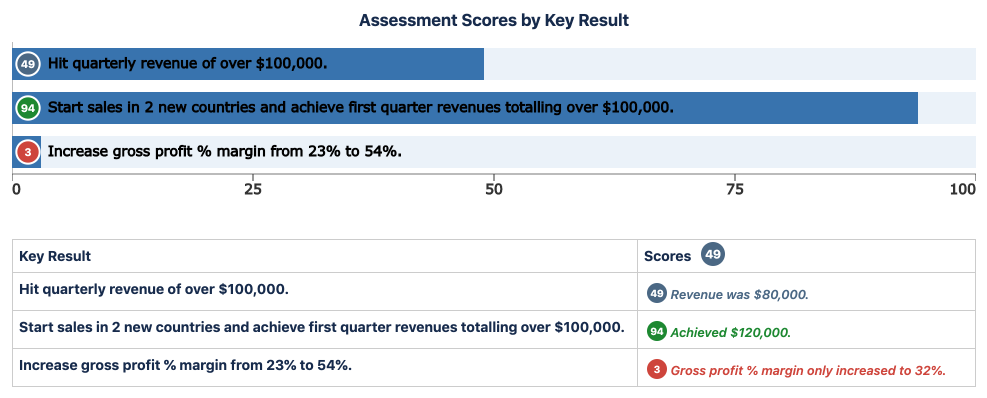Rubrics in Business
Rubrics are broadly accepted in academic circles, so why don't we see more of them in business environments? This article provides examples of how rubrics may help your business.
Role Assessments
Most organizations have detailed documents defining the expectations of the various roles (e.g. analyst, engineer, sales, etc) of their employees. Hiring, bonuses and performance assessments are often evaluated against these expectations. When the expectations are defined with little structure, the assessments made against them will also have little structure. This invariably leads to inconsistency.
Structuring role expectations in the form of rubrics ensures assessments address all the expectations which greatly improves quality and consistency.
The more detailed the role rubric is, the less writing is required by the assessor which makes it easier to complete.
Role rubrics are best structured as analytic rubrics where the rows identify the different aspects of the role and the columns are the seniority levels (e.g. Junior Engineer, Engineer, Senior Engineer, Principle Engineer, etc).
These rubrics can then be used for employee performance assessments, promotions, transfers and external hiring.
Decisions
Every company needs to make decisions. Important decisions need to be thoroughly assessed, but slow decisions can have a major impact on progress. Rubrics provide a means of ensuring the criteria of your desired outcomes are identified and considered for every option.
Read making robust decisions for further details.
Lightweight Processes
Smart organizations define processes that are appropriate to their needs. Sometimes the processes needs to be very rigorous requiring custom workflows and approvals from multiple stakeholders. Some processes, however, need to be simpler so they are faster to execute. Rubrics are a good choice for simple processes since they provide a structure to execute the process against.
Single point rubrics form a good basis to define a process. The rows define the steps in the process, whilst a single column defines the details of each step. The person executing the process can record notes against each step if required, but otherwise they can simply check it off as they proceed.
Here's a basic example:

Objectives and Key Results (OKRs)
Many companies such as Google have embraced the OKR framework. An OKR is easily expressed as a single point rubric. The objective is captured as the title of the rubric, whilst each key result defines the expectations. Let's say an OKR is defined as follows:
- Objective: Achieve record revenues while increasing profitability.
- Key Result 1: Hit quarterly revenue of over $100000.
- Key Result 2: Start sales in 2 new countries and achieve first quarter revenues totaling over $100000.
- Key Result 3: Increase gross profit % margin from 23% to 54%.
Here is a screen capture of same OKR when entered in Roobrick:

Wrap up
Of course this is not an exhaustive list of examples. There are no doubt many more cases where rubrics can be employed in business to offer advantages relating to increased rigor and repeatability.
You may also like some of our other posts...
- Retiring Jira and Confluence apps
- Sharing rubrics and assessments
- How Rubrics Save Time and Effort
- Unified Rubric
- Defining OKRs - Best Practices
- Notes app for monday.com
- Help for the Roobrick app for monday.com
- A Better Way of Working
- Roobrick app for monday.com
- Markdown in Rubrics and Assessments
- Better Decision Making
- Single Point Rubrics Over Analytic Rubrics
- Craft Pack
- Making Robust Decisions
- Understanding Roobrick